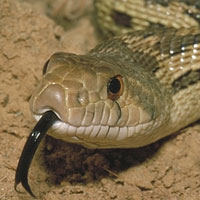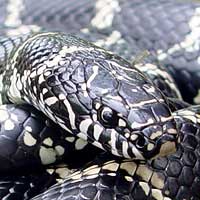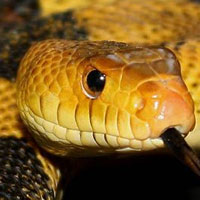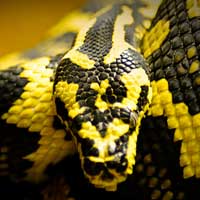The Ultimate Guide to Caring for the Ladder Rat Snake
The Ladder Rat Snake, scientifically known as Zamenis scalaris, belongs to the Colubridae family, which is the largest family of snakes, encompassing a diverse range of non-venomous and mildly venomous species recognized for their adaptability and widespread distribution across various habitats.
Scientific Name: Zamenis scalaris
Snake Family: Colubridae
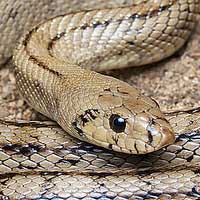
Introduction to the Ladder Rat Snake
The Ladder Rat Snake (*Zamenis scalaris*) is a non-venomous species native to southern Europe, particularly Spain, Portugal, and parts of France. Named for the ladder-like markings along its back, this snake is a favorite among enthusiasts due to its striking appearance and docile nature. With the right care and environment, the Ladder Rat Snake thrives in captivity and can make an excellent pet for both beginners and experienced keepers.
Designing the Ideal Habitat for the Ladder Rat Snake
To ensure your Ladder Rat Snake thrives, replicating its natural Mediterranean environment is essential. Here’s what you need to know:
- Enclosure Size: Provide a minimum of a 30-40 gallon tank for adults, ensuring adequate space for climbing and movement.
- Temperature Gradient: Maintain daytime temperatures of 75-85°F with a basking spot at 90°F, and nighttime temperatures of 65-70°F.
- Humidity: Keep humidity levels between 40-60%, achieved with light misting and proper ventilation.
- Substrate: Use aspen shavings, cypress mulch, or a sand-soil mix to replicate their natural environment.
- Enrichment: Include climbing branches, rocks, and hides to encourage exploration and natural behaviors.
Below is a quick reference guide for habitat setup:
| Habitat Element | Specifications |
|---|---|
| Enclosure Size | 30-40 gallons |
| Temperature | 75-85°F (day), 65-70°F (night) |
| Humidity | 40-60% |
| Substrate | Aspen shavings, cypress mulch, sand-soil mix |
Feeding the Ladder Rat Snake: Diet and Guidelines
The Ladder Rat Snake is a carnivorous species that primarily feeds on small mammals and birds in the wild. In captivity, its diet is simple and manageable:
- Juveniles: Feed pinky mice every 5-7 days.
- Subadults: Offer small to medium-sized mice every 7-10 days.
- Adults: Provide adult mice or small rats every 10-14 days.
- Prey Type: Use pre-killed prey to prevent injury and reduce stress during feeding.
- Hydration: Always ensure a fresh supply of water in a shallow dish for drinking and soaking.
Establishing a consistent feeding routine helps maintain your snake’s health and vitality.
Understanding the Behavior and Temperament of the Ladder Rat Snake
The Ladder Rat Snake is known for its active and inquisitive nature. Understanding its behavior can enhance your care and interaction:
- Activity Level: These snakes are diurnal and most active during the day.
- Climbing Enthusiasts: They enjoy climbing, so providing vertical space and branches is crucial.
- Docile Temperament: They are generally calm and tolerate handling well with regular interaction.
- Stress Indicators: Signs such as refusal to eat or excessive hiding may indicate stress or unsuitable conditions.
Providing a safe and enriched environment helps your snake thrive and reduces stress.
Health and Lifespan of the Ladder Rat Snake
With proper care, the Ladder Rat Snake can live 15-20 years in captivity. Key aspects of their health include:
- Common Health Issues: Respiratory infections, shedding problems, and mites are common concerns.
- Preventative Measures: Maintain proper temperature and humidity levels and clean the enclosure regularly.
- Veterinary Care: Schedule annual check-ups with an exotic animal veterinarian for early detection of potential issues.
- Observation: Monitor for signs of illness, such as lethargy, lack of appetite, or unusual behavior.
Consistent care and attention to detail help ensure a long and healthy life for your Ladder Rat Snake.
Reproduction and Breeding of the Ladder Rat Snake
Breeding Ladder Rat Snakes in captivity requires understanding their reproductive habits. Key considerations include:
- Breeding Season: Typically occurs in spring following a winter cooling period.
- Clutch Size: Females lay 6-12 eggs per clutch.
- Incubation: Eggs should be incubated at 80-85°F for 50-60 days.
- Hatchling Care: Provide appropriately sized enclosures and prey for hatchlings once they emerge.
Proper preparation and monitoring ensure successful breeding and healthy offspring.
Handling and Caring for the Ladder Rat Snake
Handling and caring for the Ladder Rat Snake is straightforward with the right approach. Follow these tips:
- Handle your snake gently, supporting its entire body to reduce stress.
- Avoid handling immediately after feeding to prevent regurgitation.
- Keep the enclosure clean and provide enrichment to mimic natural behaviors.
- Monitor their health and behavior regularly for signs of stress or illness.
- Establish a consistent routine for feeding, cleaning, and handling to ensure their well-being.
Building a trusting relationship with your Ladder Rat Snake ensures a rewarding and enjoyable experience for both you and your pet.
Other Snakes In This Species
 Aesculapian Rat Snake
Aesculapian Rat Snake Amur Russian Rat Snake
Amur Russian Rat Snake Bairds Rat Snake
Bairds Rat Snake Black Rat Snake
Black Rat Snake Chinese Twin-spotted Rat Snake
Chinese Twin-spotted Rat Snake Diadem Rat Snake
Diadem Rat Snake Diones Rat Snake
Diones Rat Snake Eastern Fox Snake
Eastern Fox Snake Everglades Rat Snake
Everglades Rat Snake Four-lined Rat Snake
Four-lined Rat Snake Gray Rat Snake
Gray Rat Snake Great Plains Rat Snake
Great Plains Rat Snake Green Rat Snake
Green Rat Snake Ladder Rat Snake
Ladder Rat Snake Leopard Rat Snake
Leopard Rat Snake Mandarin Rat Snake
Mandarin Rat Snake Radiated Rat Snake
Radiated Rat Snake Steppes Rat Snake
Steppes Rat Snake Texas Rat Snake
Texas Rat Snake Trans-Pecos Rat Snake
Trans-Pecos Rat Snake Trinket Rat Snake
Trinket Rat Snake Yellow Rat Snake
Yellow Rat Snake



